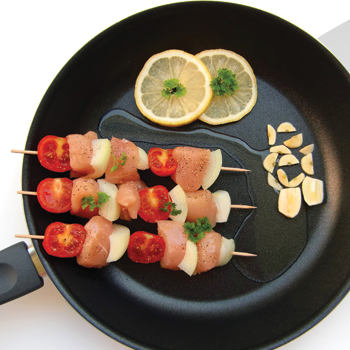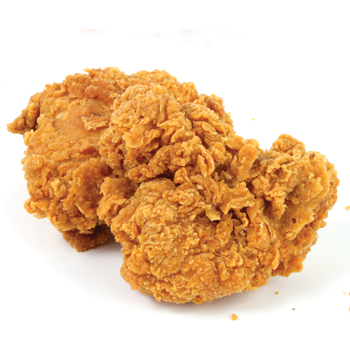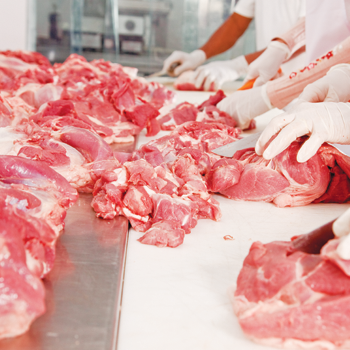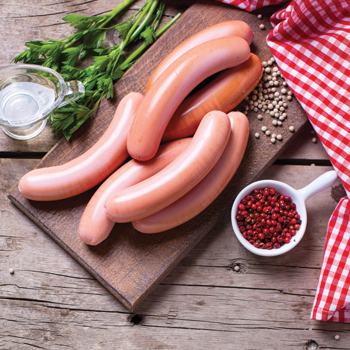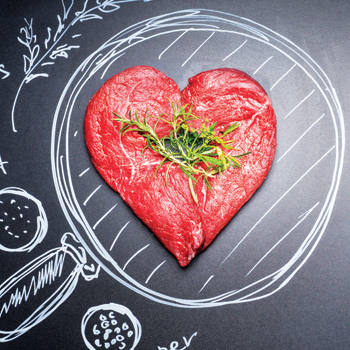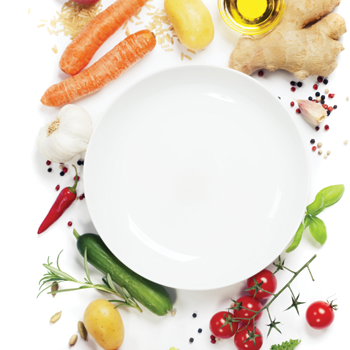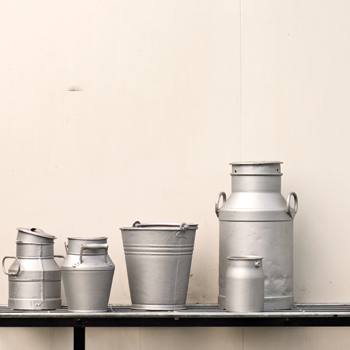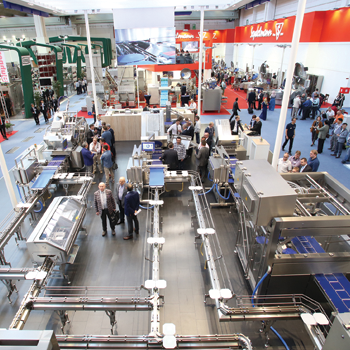
ระบบอัตโนมัติ…เทรนด์ล่ามาแรงในอุตสาหกรรมแปรรูปเนื้อสัตว์ เพื่อประสิทธิภาพ ความคุ้มค่า และคุณภาพสินค้าที่ดีกว่า
By: IFFA
www.iffa.com
Full article TH-EN
ปัจจุบัน อุตสาหกรรมแปรรูปเนื้อสัตว์ได้ให้ความสำคัญกับการประยุกต์ใช้เทคโนโลยีที่ทันสมัย ตลอดจนการเชื่อมต่อแต่ละขั้นตอนของกระบวนการผลิตอย่างอัจฉริยะ
การแบ่งส่วนและคัดแยกอย่างแม่นยำ
แรงผลักดันสำคัญที่ก่อให้เกิดการคิดค้นนวัตกรรมต่างๆ ที่ช่วยให้กระบวนการแปรรูปมีประสิทธิภาพสูงขึ้น คือ ความต้องการของบรรจุภัณฑ์แบบแบ่งส่วนและน้ำหนักบรรจุที่แม่นยำ รวมทั้งความต้องการผลิตภัณฑ์อาหารพร้อมรับประทานต่างๆ ที่เพิ่มขึ้น ระบบอัตโนมัติเต็มรูปแบบสำหรับการแบ่งส่วนและการบรรจุชิ้นเนื้อ สเต็ก ไส้กรอกสไลซ์ รวมถึงผลิตภัณฑ์เนื้อสัตว์รูปแบบต่างๆ ลงในบรรจุภัณฑ์จำเป็นต้องมีเทคโนโลยีชั้นสูงรองรับ ระบบที่ใช้ส่วนมากจะประกอบไปด้วยเลเซอร์ และ/หรือ เครื่องเอ็กซ์เรย์สแกนเนอร์ ที่มาพร้อมเครื่องชั่งในตัว หน่วยป้อนชิ้นเนื้อสัตว์เข้าเครื่องสไลซ์ และตัวเครื่องสไลซ์จะถูกติดตั้งไว้ที่ด้านบนสุดของสายการผลิต มีสายพานที่จะลำเลียงชิ้นเนื้อสัตว์ลงมาตามสายการผลิต จากนั้นชิ้นเนื้อสัตว์ที่สไลซ์เรียบร้อยแล้วจะถูกลำเลียงผ่านเครื่องคัดแยกซึ่งมีหลายสายพาน (Multitrack belt sorters) โดยมีระบบรับส่งหรือหุ่นยนต์คัดแยกที่มีความซับซ้อนทำการวางชิ้นเนื้อสไลซ์ลงในบรรจุภัณฑ์และลำเลียงต่อไปยังเครื่องปิดผนึกถาด (Tray sealer) ที่อยู่ปลายสายการผลิต
ระบบอัตโนมัติที่ใช้หุ่นยนต์…ปัจจัยสำคัญที่ช่วยเพิ่มมูลค่า
ระบบอัตโนมัติแบบเดิมๆ มักมีความซับซ้อนมากเกินไป ราคาสูงเกินไป และปรับเปลี่ยนการใช้งานได้ยาก โดยส่วนมากการปรับเปลี่ยนรูปแบบการทำงานของเครื่องจักรที่ได้รับการออกแบบมาเพื่องานใดงานหนึ่งโดยเฉพาะนั้นแทบจะเป็นไปไม่ได้เลย หรือหากจะเกิดขึ้นได้ก็ต้องมีการติดตั้งอุปกรณ์เพิ่มเติมมากมาย ทำให้เสียทั้งเวลาและเงินจำนวนมหาศาล แต่หุ่นยนต์สำหรับการใช้งานในอุตสาหกรรมไม่เป็นเช่นนั้น เนื่องจากหุ่นยนต์มีความยืดหยุ่นต่อการเปลี่ยนแปลงรูปแบบต่างๆ อย่างเหลือเชื่อ มีความรวดเร็ว เที่ยงตรง และแม่นยำ หุ่นยนต์จึงกลายเป็นส่วนสำคัญในการเพิ่มประสิทธิภาพ คุณภาพ และความยั่งยืนสำหรับงานทุกประเภท ไม่ว่าจะเป็นการจัดการผลิตภัณฑ์ การควบคุณคุณภาพ หรือการคัดแยกและการบรรจุ แล้วอะไรคือตัวบ่งบอกความสำเร็จของการประยุกต์ใช้หุ่นยนต์? จริงๆ แล้วหุ่นยนต์อุตสาหกรรมทำได้เพียงเคลื่อนย้ายชิ้นงานอย่างรวดเร็ว เที่ยงตรง และมีความแม่นยำสูงอย่างต่อเนื่องภายในขอบเขตการทำงานที่กำหนดไว้ แต่สิ่งที่อยู่เบื้องหลังความสำเร็จของหุ่นยนต์ที่ถือเป็นผู้ช่วยครอบจักรวาล ก็คือบรรดาอุปกรณ์ต่างๆ เช่น เครื่องหนีบจับ กล้องถ่ายภาพและเซ็นเซอร์ ซอฟต์แวร์ระดับสูง ระบบควบคุมอัจฉริยะที่ได้รับการตั้งค่าและตั้งโปรแกรมโดยบุคลากรที่มีคุณสมบัติเหมาะสม ในปัจจุบันมีการใช้หุ่นยนต์ในแทบทุกส่วนของสายการแปรรูปเนื้อสัตว์ ตั้งแต่การเชือด ไปจนถึงการบรรจุเนื้อสัตว์และตัดแบ่งไส้กรอก สำหรับในกระบวนการหยิบและวาง พบว่าหุ่นยนต์สามารถหยิบเนื้อสัตว์และไส้กรอกหลากหลายประเภทออกจากสายพานและวางลงในถาดที่ถูกต้องได้อย่างรวดเร็ว ในบางสายการผลิตหุ่นยนต์สามารถหยิบวางด้วยความรวดเร็วมากถึง 240 รอบต่อนาทีเลยทีเดียว
At present, the focus of the meat-processing industry is increasingly on intelligent linkage of the individual stages and the increased use of modern information and control technology.
Exact Portioning and Sorting
An important driving force of innovation behind increasingly efficient processing lines is the growing demand for portioned and fixed-weight packaging, and convenience products. The fully automatic portioning and insertion of filets, steaks, sausage slices and other meat products in the packaging calls for high-tech solutions. Most systems consist of laser and/or x-ray scanners, with integrated scales, feeding units for the slicer and the slicer itself installed at the top of the processing line, as well as downstream conveyor belts, which take the cut products to multitrack belt sorters with sophisticated shuttle systems or sorting and insertion robots that, for example, place the packages in the downstream tray sealer.
Robot-aided Automation as a Value-added Factor
Conventional automation is often too complex, too expensive and, in particular, insufficiently flexible. In most cases, converting machines designed for specific tasks is impracticable or only possible with a big input of materials, time and money. However, this is not the case with industrial robots. Thanks to their extraordinary flexibility, speed, precision and repeat accuracy, they are key elements for greater efficiency, quality and sustainability no matter what the task, e.g., product handling, quality control or sorting and packaging. But what characterizes a successful robot application? Superficially, an industrial robot can only move a fictive tool-centre point quickly, precisely and with a high degree of repeat accuracy within a defined working area. It is the grabber or tool, the cameras and sensors, highly developed software, intelligent control systems and the programming / configuration by qualified personnel that make robots universal helpers. Today, they are to be found in almost all parts of the meat-processing chain – from slaughtering to packaging meat and sausage portions. In fast pick & place operations, robots can take all different kinds of meat and sausage products from conveyor belts and place them in the correct trays, in some cases at the rate of up to 240 cycles per minute.
